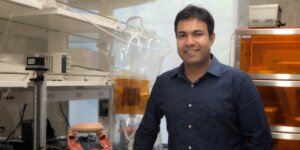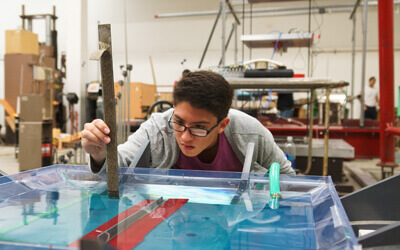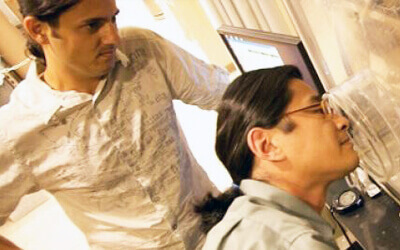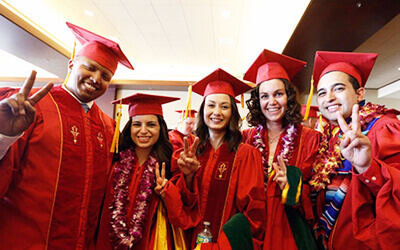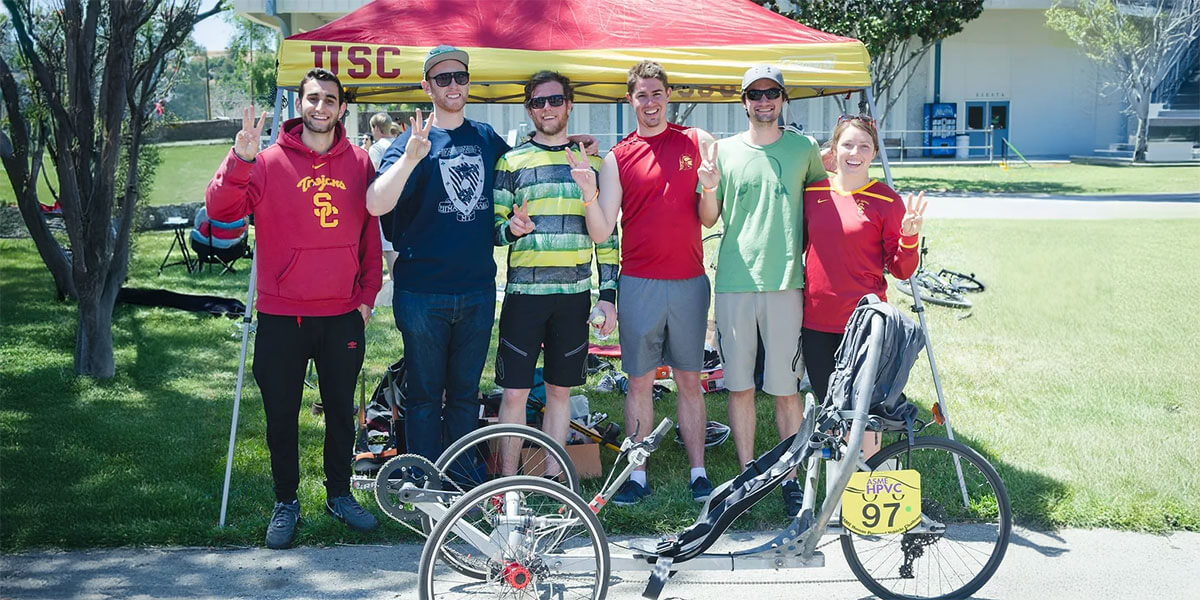
The USC Recumbent Vehicle Design Team at the annual American Society of Mechanical Engineers (ASME) Human Powered Vehicle Challenge (HPVC)
Back when Brook Hammerschmidt (ME BS ’15), an alumnus of the USC Department of Aerospace & Mechanical Engineering, founded the USC Recumbent Vehicle Design Team (RVDT), he was searching for his optimal way of gaining hands-on experience in the field of mechanical engineering.
Typically, engineering classes involve a strong focus on theory and fundamentals, and student-run design teams – such as USC Racing and the USC AeroDesign team – provide students with the ideal training to gain hands-on experience. Hammerschmidt had originally wanted to join USC Racing – building prototype race cars for the Formula SAE competition – but so did the rest of his classmates. So, he decided to combine his interest in cycling and racing to start his own team designing recumbent vehicles.
RVDT was founded in time for the 2014/2015 American Society of Mechanical Engineers (ASME) competition season, entering the Human Powered Vehicle Challenge (HPVC). The first year was successful – RVDT earned a 3rd place finish in the endurance race against 36 other teams. That success has continued over the past 10 years.
RVDT has competed at annual ASME HPVC competitions across the country, with multiple podium finishes in individual events – such as a 1st place sprint finish in 2018. The 2nd place overall finish in 2024 at Boise State University was the team’s strongest performance yet. Most recently, for the 10th anniversary season, RVDT received 1st in design for the second year in a row and also received the best innovation award.
For Matthew Gilpin, associate professor of aerospace and mechanical engineering practice and the team’s faculty advisor, RVDT’s success comes down to four standout qualities:
Resilience
Again and again, RVDT has demonstrated impressive resilience in their ability to compete. The ASME electric HPVC endurance challenge is designed to test the mechanical limits of the student-built vehicles – as a result, mechanical failures are common. Nonetheless, the team consistently rises to the challenge of keeping their vehicle competing and steady on the track.
RVDT has also shown resilience in regaining strength after the COVID-19 pandemic. The 2020, 2021 and 2022 competitions were all fully remote design competitions; as a result, the team was unable to consistently preserve and cultivate its mechanical institutional knowledge. However, the team has since rebuilt itself and is now competing at its highest level yet.
Ownership
RVDT has always been a relatively small team, which means that students are required to take ownership of their designs from concept stage and throughout the build process. RVDT has always been an excellent opportunity for students to develop there mechanical engineering skills in an environment with applicable and tractable problems. A student can join the team in their freshman year, and build and design parts that are ultimately incorporated in the competition vehicle.
Craftsmanship
Each year, RVDT designs and builds a new vehicle entirely from scratch. The team isn’t afraid to take risks and follow through.
For instance, their 2019 vehicle was switched to a 4-wheel vehicle design, requiring the students to incorporate a custom differential and completely rethink their drivetrain layout. In 2024, the team designed their vehicle around a unique tilt steering mechanism; in 2025, their pedal adjustment system (which won a best innovation award) was designed to rotate the pedal assembly around a central pivot, thereby eliminating the conventional use of a variable chain line.
Human Powered
Given that recumbent vehicles are human-powered, there’s also an athletic component to this engineering challenge. The RVDT team draws engineers interested in human performance, human factors and ergonomics. It’s not uncommon at the eHPVC to have competitors who are also triathletes and competitive cyclists.
—
“Each competition brings new challenges and new excitement, and I’m extremely fortunate to advise such a hard-working and dedicated team of students,” said Gilpin. “Our goals for the coming year are to design a lighter and faster vehicle which can take full advantage of our electric assist system, while maintaining the high-speed stability and solar power assist from this year’s bike. We’re aiming to achieve our 1st overall finish in competition – given the team’s consistent success over the last 10 years, I’m looking forward to seeing RVDT go from strength to strength.”
Published on May 8th, 2025
Last updated on May 8th, 2025







